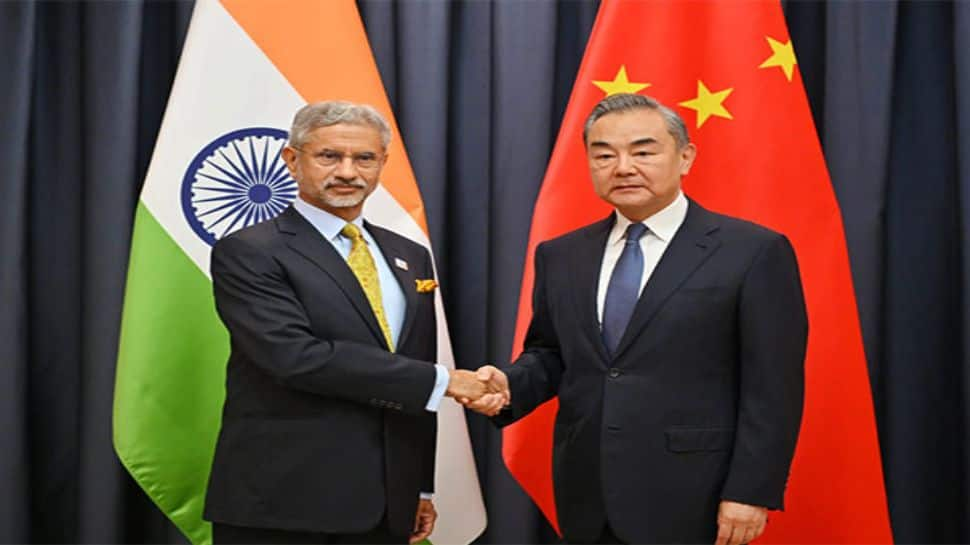Business
India And China To Reopen Direct Flights Soon, Ease Visas – Here’s What It Means For Travellers

New Delhi: The national capital saw two days of intense diplomacy last week. The visit of Chinese Foreign Minister Wang Yi, which was hosted at the invitation of National Security Advisor Ajit Doval, placed the spotlight once again on the complex but important relationship between India and China.
From August 18 to 19, Wang joined Doval in co-chairing the 24th round of the Special Representatives’ Dialogue on the Boundary Question. He also met External Affairs Minister Dr. S. Jaishankar and called on Prime Minister Narendra Modi. The conversations went beyond the sensitive boundary issue and touched travel, trade and cultural exchanges.
Prime Minister Modi shared his outlook after the meetings. “Stable, predictable, constructive ties between India and China will contribute significantly to regional as well as global peace and prosperity,” he posted on X.
Direct Flights, Easier Visas
The highlight for travellers came in the form of a long-awaited decision. Both governments agreed to restart direct flights between India and the Chinese mainland at the earliest and to finalise a new Air Services Agreement.
In addition to resuming air services, the two sides also announced visa facilitation for tourists, business visitors, media professionals and others.
Progress On The Border Dialogue
The boundary question remained central. Both sides acknowledged that peace had largely been maintained since the last round of dialogue.
New steps were agreed upon:
- Viewing the issue through a political lens in line with the 2005 guiding principles.
- Setting up an Expert Group to explore “early harvest” outcomes in boundary delimitation.
- Creating a Working Group for smoother border management.
- Extending General Level Mechanisms to eastern and middle sectors, beyond the western sector.
- Using existing diplomatic and military platforms to carry forward de-escalation talks.
- The next round of the Special Representatives’ Dialogue will take place in China.
Wider Bilateral Engagements
Jaishankar’s meeting with Wang covered a wider canvas. The decisions that were taken included:
- Re-opening of border trade routes through Lipulekh Pass, Shipki La Pass and Nathu La Pass.
- Expansion of the Kailash Mansarovar Yatra from 2026.
- Enhanced cooperation on rivers, with China committing to share hydrological data during emergencies.
- Steps to strengthen investment and trade flows.
Support In Global Forums
India and China also exchanged assurances on multilateral events. China welcomed Prime Minister Modi’s participation in the SCO Summit at Tianjin later this year.
India reaffirmed its support for China’s SCO presidency. In return, Beijing expressed support for India’s hosting of the BRICS Summit in 2026.
The visit closed with both sides reaffirming a shared message. Dialogue will continue. Travel will resume. Pilgrimage routes will expand. Trade will grow. The border remains under watch, but the language of engagement is back on the table.
Business
Private sector data: Over 2 lakh private companies closed in 5 years; govt flags monitoring for suspicious cases – The Times of India

NEW DELHI: The government on Monday said that over the past five years, more than two lakh private companies have been closed in India.According to data provided by Minister of State for Corporate Affairs Harsh Malhotra in a written reply to the Lok Sabha, a total of 2,04,268 private companies were shut down between 2020-21 and 2024-25 due to amalgamation, conversion, dissolution or being struck off from official records under the Companies Act, 2013.Regarding the rehabilitation of employees from these closed companies, the minister said there is currently no proposal before the government, as reported by PTI. In the same period, 1,85,350 companies were officially removed from government records, including 8,648 entities struck off till July 16 this fiscal year. Companies can be removed from records if they are inactive for long periods or voluntarily after fulfilling regulatory requirements.On queries about shell companies and their potential use in money laundering, Malhotra highlighted that the term “shell company” is not defined under the Companies Act, 2013. However, he added that whenever suspicious instances are reported, they are shared with other government agencies such as the Enforcement Directorate and the Income Tax Department for monitoring.A major push to remove inactive companies took place in 2022-23, when 82,125 companies were struck off during a strike-off drive by the corporate affairs ministry.The minister also highlighted the government’s broader policy to simplify and rationalize the tax system. “It is the stated policy of the government to gradually phase out exemptions and deductions while rationalising tax rates to create a simple, transparent, and equitable tax regime,” he said. He added that several reforms have been undertaken to promote investment and ease of doing business, including substantial reductions in corporate tax rates for existing and new domestic companies.
Business
Pakistan’s Textile Exports Reach Historic High in FY2025-26 – SUCH TV

Pakistan’s textile exports surged to $6.4 billion during the first four months of the 2025-26 fiscal year, marking the highest trade volume for the sector in this period.
According to the Pakistan Bureau of Statistics (PBS), value-added textile sectors were key contributors to the growth.
Knitwear exports reached $1.9 billion, while ready-made garments contributed $1.4 billion.
Significant increases were observed across several commodities: cotton yarn exports rose 7.74% to $238.9 million, and raw cotton exports jumped 100%, reaching $2.6 million from zero exports the previous year.
Other notable gains included tents, canvas, and tarpaulins, up 32.34% to $53.48 million, while ready-made garments increased 5.11% to $1.43 billion.
Exports of made-up textile articles, excluding towels and bedwear, rose 4.17%, totaling $274.75 million.
The report also mentioned that the growth in textile exports is a result of improved global demand and stability in the value of the Pakistani rupee.
Business
Peel Hunt cheers ‘positive steps’ in Budget to boost London market and investing

UK investment bank Peel Hunt has given some support to under-pressure Chancellor Rachel Reeves over last week’s Budget as it said efforts to boost the London market and invest in UK companies were “positive steps”.
Peel Hunt welcomed moves announced in the Budget, such as the stamp duty exemption for shares bought in newly listed firms on the London market and changes to Isa investing.
It comes as Ms Reeves has been forced to defend herself against claims she misled voters by talking up the scale of the fiscal challenge in the run-up to last week’s Budget, in which she announced £26 billion worth of tax rises.
Peel Hunt said: “Following a prolonged period of pre-Budget speculation, businesses and investors now have greater clarity from which they can start to plan.
“The key measures were generally well received by markets, particularly the creation of additional headroom against the Chancellor’s fiscal rules.
“Initiatives such as a stamp duty holiday on initial public offerings (IPOs) and adjustments to the Isa framework are intended to support UK capital markets and encourage investment in British companies.
“These developments, alongside the Entrepreneurship in the UK paper published simultaneously, represent positive steps toward enhancing the UK’s attractiveness for growth businesses and long-term investors.”
Ms Reeves last week announced a three-year stamp duty holiday on shares bought in new UK flotations as part of a raft of measures to boost investment in UK shares.
She also unveiled a change to the individual savings account (Isa) limit that lowers the cash element to £12,000 with the remaining £8,000 now redirected into stocks and shares.
But the Chancellor also revealed an unexpected increase in dividend tax, rising by 2% for basic and higher rate taxpayers next year, which experts have warned “undermines the drive to increase investing in Britain”.
Peel Hunt said the London IPO market had begun to revive in the autumn, although listings activity remained low during its first half to the end of September.
Firms that have listed in London over recent months include The Beauty Tech Group, small business lender Shawbrook and tinned tuna firm Princes.
Peel Hunt added that deal activity had “continued at pace” throughout its first half, with 60 transactions announced across the market during that time and 10 active bids for FTSE 350 companies, as at the end of September.
Half-year results for Peel Hunt showed pre-tax profits jumped to £11.5 million in the six months to September 30, up from £1.2 million a year earlier, as revenues lifted 38.3%.
Peel Hunt said its workforce has been cut by nearly 10% since the end of March under an ongoing savings drive, with full-year underlying fixed costs down by around £5 million.
Steven Fine, chief executive of Peel Hunt, said: “The second half has started strongly, with the group continuing to play leading roles across both mergers and acquisitions and equity capital markets mandates.”
-

 Sports1 week ago
Sports1 week agoWATCH: Ronaldo scores spectacular bicycle kick
-

 Entertainment1 week ago
Entertainment1 week agoWelcome to Derry’ episode 5 delivers shocking twist
-

 Politics1 week ago
Politics1 week agoWashington and Kyiv Stress Any Peace Deal Must Fully Respect Ukraine’s Sovereignty
-

 Business1 week ago
Business1 week agoKey economic data and trends that will shape Rachel Reeves’ Budget
-

 Politics1 week ago
Politics1 week ago53,000 Sikhs vote in Ottawa Khalistan Referendum amid Carney-Modi trade talks scrutiny
-

 Tech6 days ago
Tech6 days agoWake Up—the Best Black Friday Mattress Sales Are Here
-

 Fashion1 week ago
Fashion1 week agoCanada’s Lululemon unveils team Canada kit for Milano Cortina 2026
-

 Tech1 day ago
Tech1 day agoGet Your Steps In From Your Home Office With This Walking Pad—On Sale This Week







